The walk down the forest road passed between pine forest on the left, and pines mixing with hardwoods grading down to swampland on the right.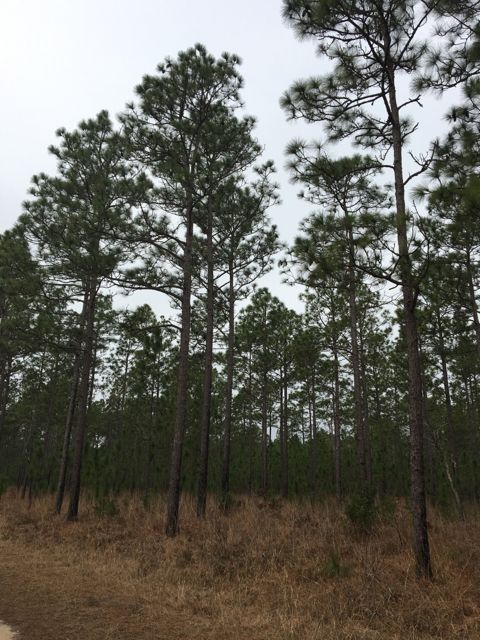
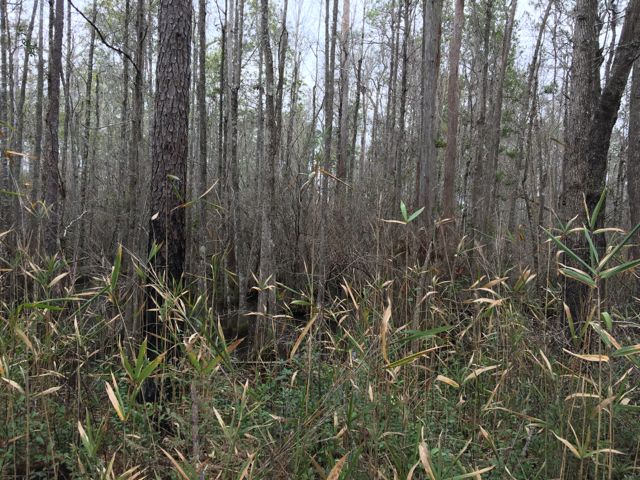 The locked gate at the beginning of this Francis Marion National Forest road
The locked gate at the beginning of this Francis Marion National Forest road
eliminated the possibility of encountering motorized traffic, and the grass covering the wide path was a sign of limited recent travel by Forest Service vehicles. Pine trees were everywhere, both loblolly (Pinus taeda) and longleaf (Pinus palustris). The road after a mile opened out into a plowed field of several acres, green shoots popping up in the turned soil that was regularly marked with deer prints. One oak stood alone in the opening, its crown contrasted the narrow pines.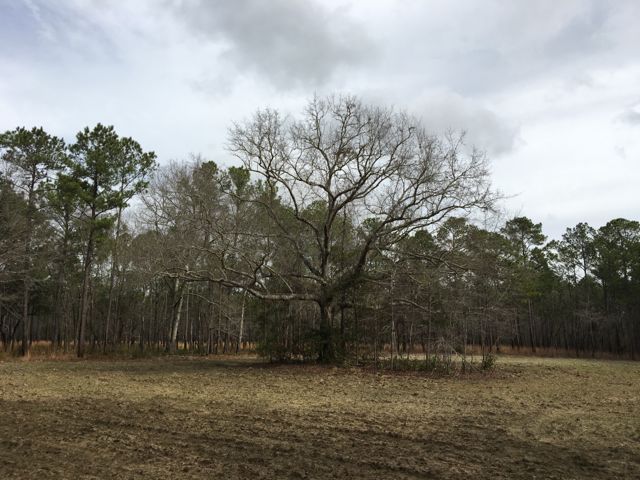 Beyond this field, the road invited further exploration.
Beyond this field, the road invited further exploration.
* * * * * *
In the winter of 1990, following the devastation to local forests by Hurricane Hugo, the woods around my home were defoliated and shattered. One morning during a visit from my parents, a neighbor and friend Terry Cumbee dropped by bearing a hundred pine seedlings. He did not suggest, but directed: “Plant these today”. He lent a planting bar as the tool of choice for this task. So my father and I tucked in these plants without realizing how successful they would be. Their fast growth awakened an appreciation for a tree I previously had demeaned, despite having built the frame of my home with locally milled pines. For years my father and I observed the vitality of our planted trees: if only he could see them today.
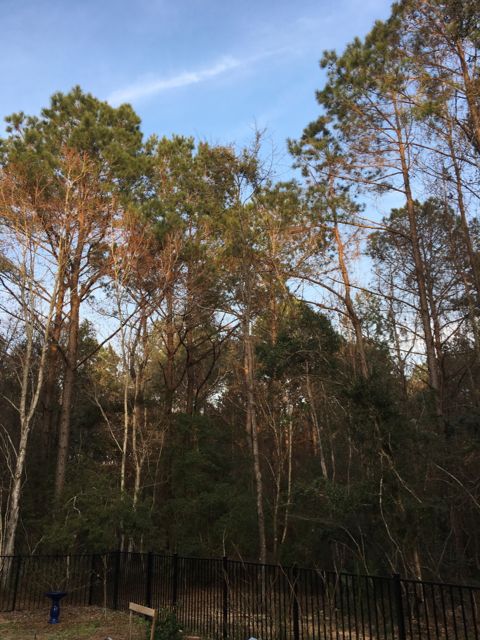 They have outgrown other adjacent tree species, and now measure between 35-40 feet tall.
They have outgrown other adjacent tree species, and now measure between 35-40 feet tall.
* * * * * *
The road continued beyond the open field, and the grass taller and less disturbed than the previous track. On the right the forest sloped to bottomland hardwood forest, marked along its border with red signs designating it as a wIlderness area.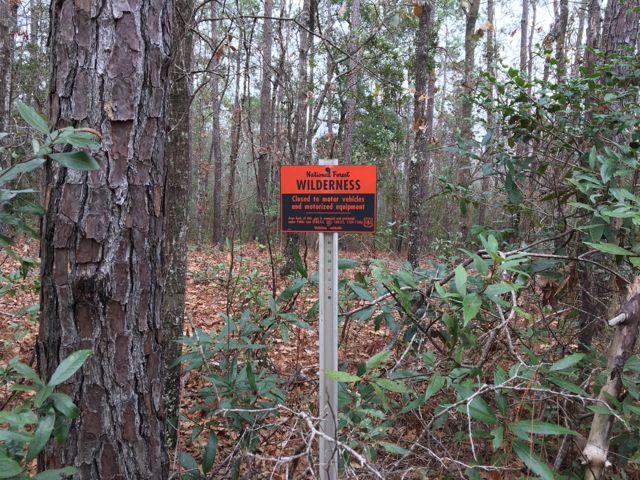 To the left was pine forest, but distinct from others previously seen. This was mature longleaf forest, the trees amply spaced, and the forest floor covered with brown grasses.
To the left was pine forest, but distinct from others previously seen. This was mature longleaf forest, the trees amply spaced, and the forest floor covered with brown grasses.
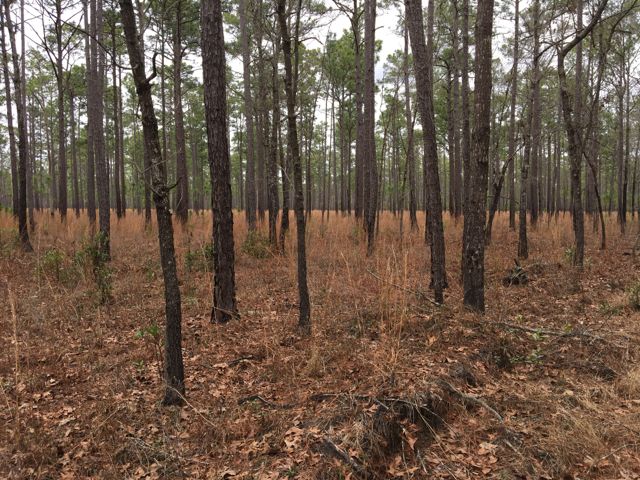 All trees had burn marks on their trunks, reflecting the quality of these pine woodlands, dependent on regular burning. The park-like quality of this forest continued for the next mile along a road now sprinkled with small bays and hollies poking up through the knee-high grass. Longleafs and other pines once covered 150,000 square miles of the southeast; longleafs were dominant over 60 million acres. I turned around before the road stopped, wondering about the adjacent Little Wambaw Wilderness Area, a wetland including the headwaters of Mechaw Creek, a rivulet connecting to Wambaw Creek and the Santee River.
All trees had burn marks on their trunks, reflecting the quality of these pine woodlands, dependent on regular burning. The park-like quality of this forest continued for the next mile along a road now sprinkled with small bays and hollies poking up through the knee-high grass. Longleafs and other pines once covered 150,000 square miles of the southeast; longleafs were dominant over 60 million acres. I turned around before the road stopped, wondering about the adjacent Little Wambaw Wilderness Area, a wetland including the headwaters of Mechaw Creek, a rivulet connecting to Wambaw Creek and the Santee River.
In the past month I have ventured out to various trails in the Francis Marion National Forest, and have begun exploring the many roads behind locked gates.
I have walked on just a few of the Forest’s more than 250,000 acres. I had learned to value pines by their robust growth on my property, and subsequently my appreciation has grown for the Francis Marion. I was taken aback hearing Patrick McMillan point out the biodiversity in the Forest, citing the existence of 2000 botanical species. The Forest Service is converting more land to longleaf woodlands. 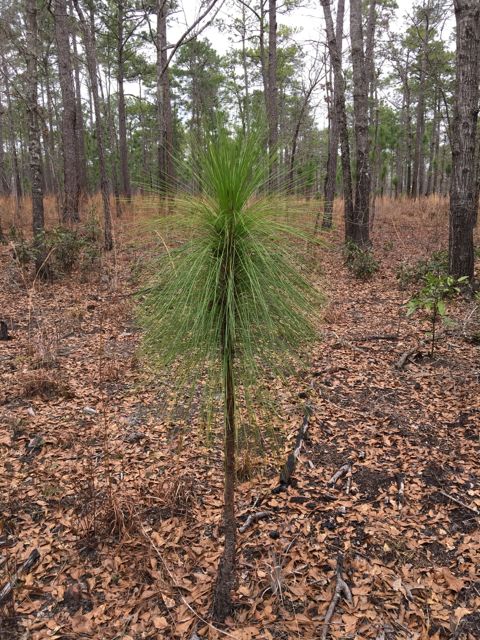 The longleaf ecosystems have a number of dependent species, perhaps none more important than the red-cockaded woodpecker. At last count, FMNF has recorded 420 breeding groups of this endangered species, a population second in size in the country. The nest trees are well marked in the Forest.
The longleaf ecosystems have a number of dependent species, perhaps none more important than the red-cockaded woodpecker. At last count, FMNF has recorded 420 breeding groups of this endangered species, a population second in size in the country. The nest trees are well marked in the Forest. 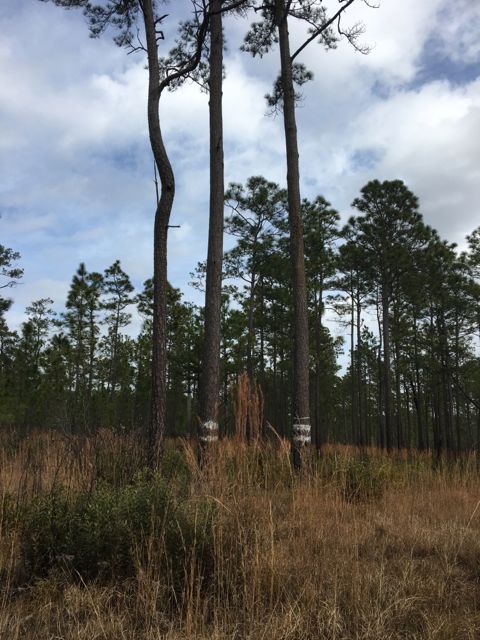 I have only scratched the surface of understanding the Forest’s ecosystems, and the natural history of pines. A quote from Walden, expressing Thoreau’s process of learning about a simple plant, inspires my study of this ubiquitous tree: “I was determined to know beans.”
I have only scratched the surface of understanding the Forest’s ecosystems, and the natural history of pines. A quote from Walden, expressing Thoreau’s process of learning about a simple plant, inspires my study of this ubiquitous tree: “I was determined to know beans.”




Bob,
Your article is plesant diversion from my usual disapointment over Forest stewardship. Plantation loblolly might be considered the species most detramental to the longleaf system. Whether-or-not native to Fracis Marion is arguable. I do admire antics of red-cockaded woodpecker, but lament the emphasis increasingly assigned the bird as indicator of healthy forest, which it is not.
Please keep-up your good work.
Appreciate your comments, John.
Appears I have found one who can help me with my pine education.
Thanks for sharing! You need a post a picture of your pine trees planted with your dad
Oh but I did Pam. The photo is right after “if only he could see them today”.